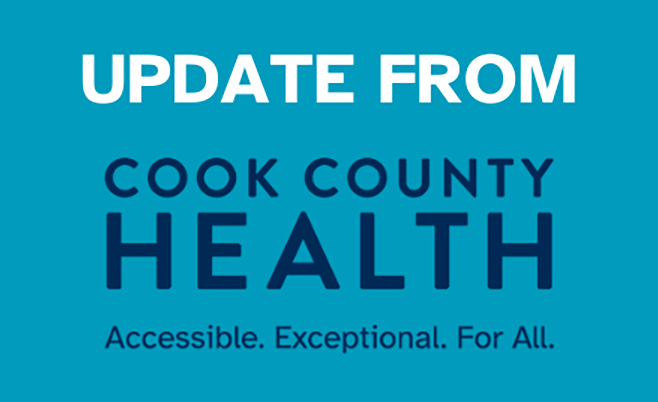May 4, 2018
Six hours used to be the narrow time frame stroke victims had to get life-saving treatment once the first symptoms started. But new guidelines from the American Heart Association and American Stroke Association suggest that window of time could be extended to as much as 24 hours after the onset of symptoms.
“The number one message we want to get out is that time absolutely matters if you’ve had a stroke. The faster someone can get to a hospital the better our chances are to reduce potential brain damage,” Dr. Lakshmi Warrior, Associate Medical Director of Stroke at Cook County Health (CCH) stressed. “So you should call 911 immediately as soon as you recognize any of the warning signs of stroke.”
That said, Dr. Warrior said the new guidelines, based on studies that have recently come out, are very encouraging for stroke victims.
“It suggests we have more options for preventing brain damage beyond that narrow window,” Dr. Warrior said. “And while not every stroke patient may be a candidate for those interventions, it still gives doctors more options than we used to have to save lives. But none of that matters if someone having a stroke doesn’t call 911 immediately, so that’s still the number one priority for people.”
An ischemic stroke—which accounts for the majority of strokes—happens when blood vessels to the brain become blocked or narrowed by a clot, cutting off blood flow to the brain. If this blood flow is not restored, it may lead to permanent damage to the brain.
The time from symptom onset to presentation is very important when considering what treatments can be used. Tissue plasminogen activator (tPA), also known as the clot busting drug, must be given within four and a half hours of the onset of stroke. In patients with severe stroke symptoms found to have a blood clot in one of the large blood vessels of the brain, the clot can be physically removed if the patient can be treated within 6 hours of onset of symptoms. The physical removal of a clot is called an endovascular procedure or a mechanical thrombectomy.
“In a breakthrough for stroke patients, two trials (DAWN and DEFUSE 3) have shown a clear benefit to extending the window for using mechanical thrombectomy for certain patients to up to 16-24 hours,” said Dr. Warrior, who added that CCH follows the new guidelines. “This gives us hope to be able to treat more patients with stroke symptoms than ever before.”

May is Stroke Awareness Month. Do you know the warning signs for a stroke?
According to the Centers for Disease Control and Prevention, the symptoms of a stroke can include:
- Sudden numbness or weakness in the face, arm, or leg, especially on one side of the body.
- Sudden confusion, trouble speaking, or difficulty understanding speech.
- Sudden trouble seeing in one or both eyes.
- Sudden trouble walking, dizziness, loss of balance, or lack of coordination.
- Sudden severe headache with no known cause.
On average, a stroke patients loses 1.9 million brain cells every minute a stroke goes untreated. So if you have signs or symptoms of stroke, call 911 immediately. Remember, time is brain.

